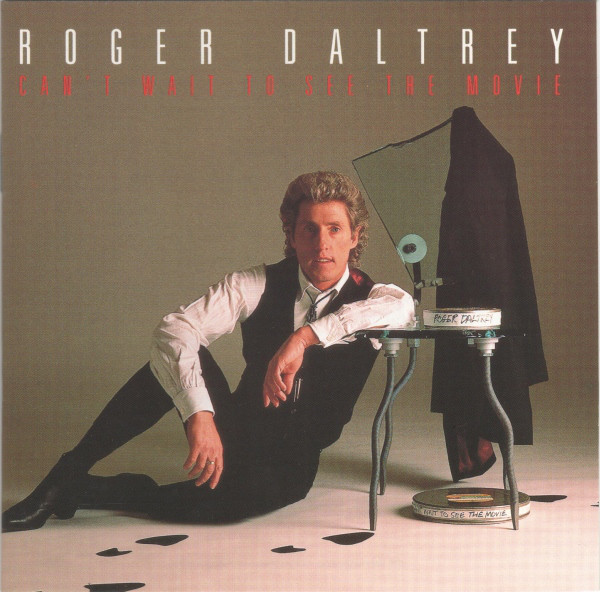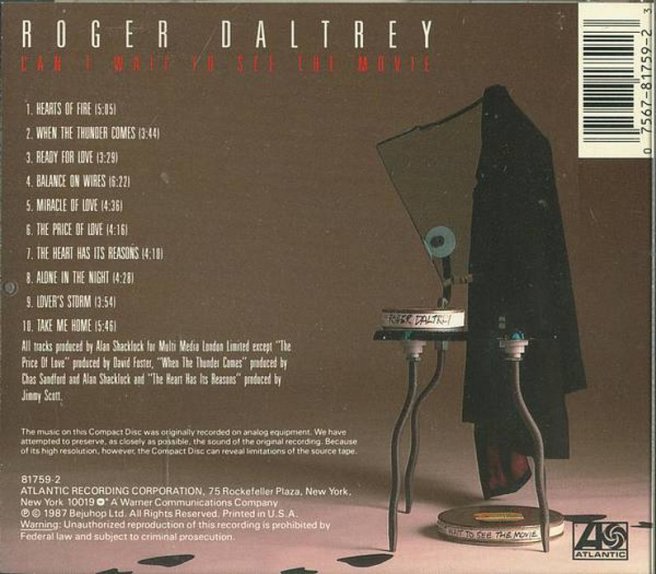
Image used to solely illustrate subject for an album review, and consistent with Fair Use Doctrine
Rocks in the Head, released 1 July 1992, is Roger’s eighth solo album, and until very recently seemed to be his solo swan song. He recorded it at The Hit Factory in London and New York, and unusually co-wrote seven of the eleven songs. Once again, Roger’s cousin Graham Hughes designed and photographed the cover.
The album only charted at #83 in Canada. As mentioned in previous posts, Roger never did much marketing for his solo career and knew early on he’d never be a huge solo star. He began taking it more seriously after The Who broke up, but it still didn’t become anywhere close to a full-time job.

RITH is a very polished album, with Roger in fine vocal form. While it does have an unmistakably early Nineties sound, it’s not hopelessly dated like, say, Hope + Glory. It’s also greatly aided by how Roger co-wrote so many of the songs, thus adding a personal, emotional connection to the lyrics. E.g., “Days of Light” was inspired by his former job in a sheet metal factory and how he always looked forward to having fun and relaxing over the weekend break.
In 2009, at a solo show in Vancouver, Roger forgot the lyrics to “Days of Light” halfway through. Instead of acting like a spoilt diva or running backstage in embarrassment, Roger told the audience that was only the second time he’d ever sung it live (the last time being a 1992 appearance on David Letterman) and started the song over again.
“Everything a Heart Could Ever Want (Willow)” is about Roger’s second daughter Willow (born 20 March 1975), and has really sweet, poignant lyrics about watching a child taking her first steps into adulthood. His son Jamie (born 1981) provides backing vocals.
Too often, we don’t really think of celebrities as parents. We obviously know they have kids, but we’re so used to seeing them only in their role as singers, musicians, actors, etc. Thus, it’s so precious to get a little glimpse into the world of Roger’s private life and his fatherly feelings for his kids.
Track listing:
“Who’s Gonna Walk on Water” (written by Gerald McMahon)
“Before My Time is Up” (Dave Katz and Gerald McMahon)
“Times Changed” (Roger and Gerald McMahon)
“You Can’t Call It Love” (Roger, Walter Ray, Dave Ruffy)
“Mirror Mirror” (Gerald McMahon)
“Perfect World” (Gerald McMahon)
“Love Is” (Roger, Ricky Byrd, Dave Katz, Gerald McMahon)
“Blues Man’s Road” (Roger, Ricky Byrd, Gerald McMahon)
“Everything a Heart Could Ever Want (Willow)” (Roger and Gerald McMahon)
“Days of Light” (Roger and Gerald McMahon) (#6 in the U.S.)
“Unforgettable Opera” (Roger and Gerald McMahon) (the source of the album’s title)
My favourite tracks are “Mirror Mirror,” “Unforgettable Opera,” “Everything a Heart Could Ever Want (Willow),” and “Days of Light.”



















